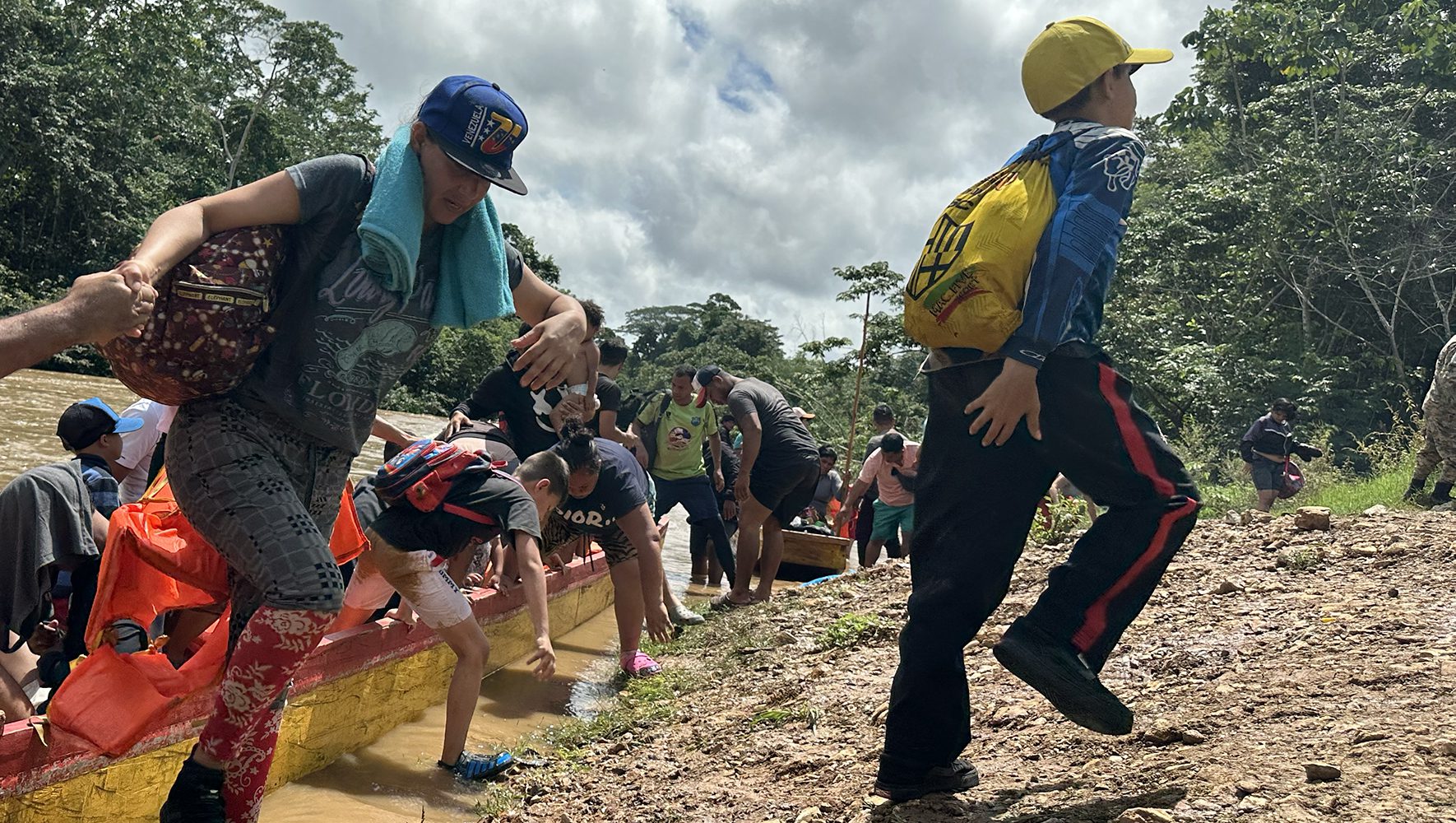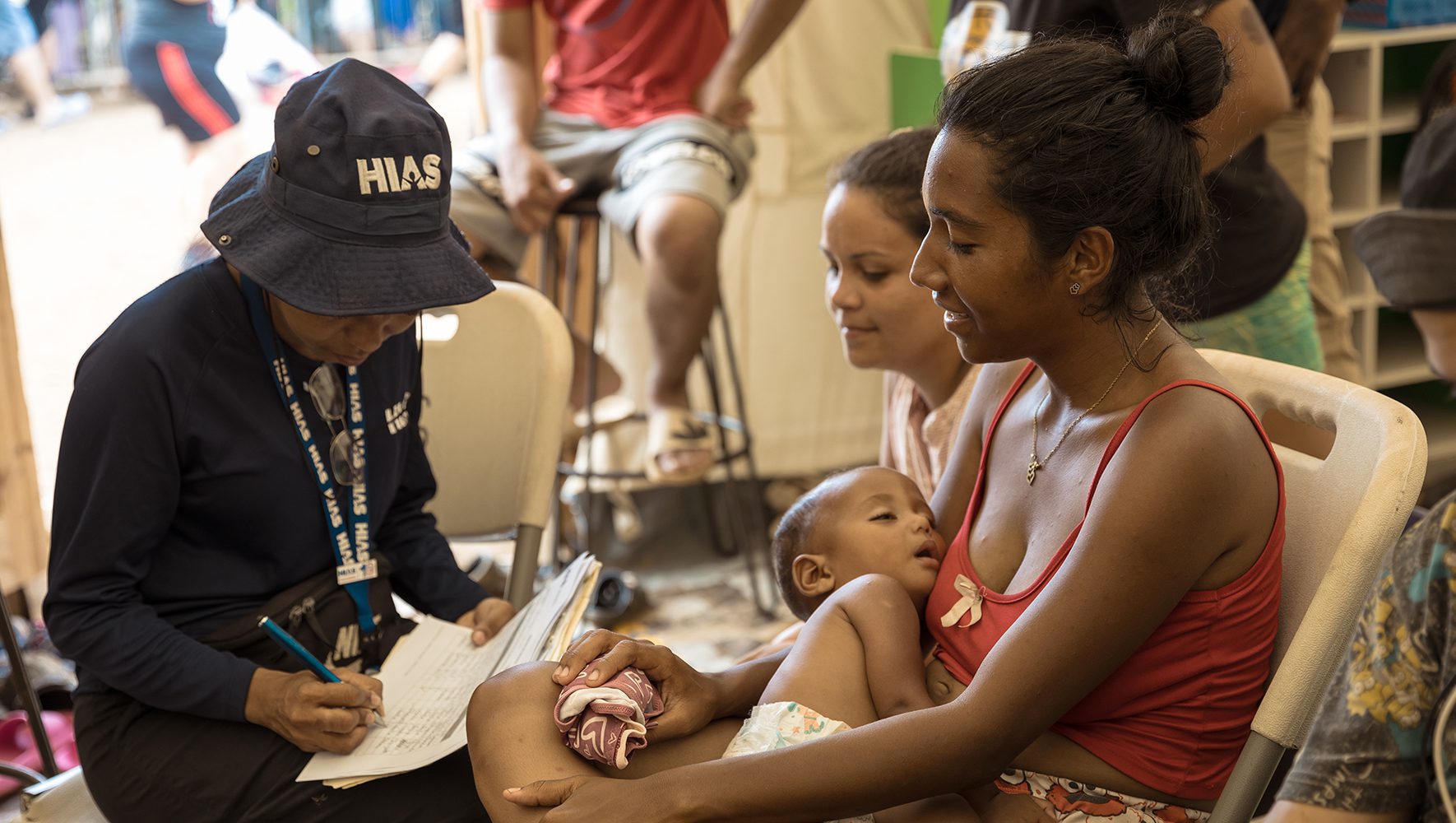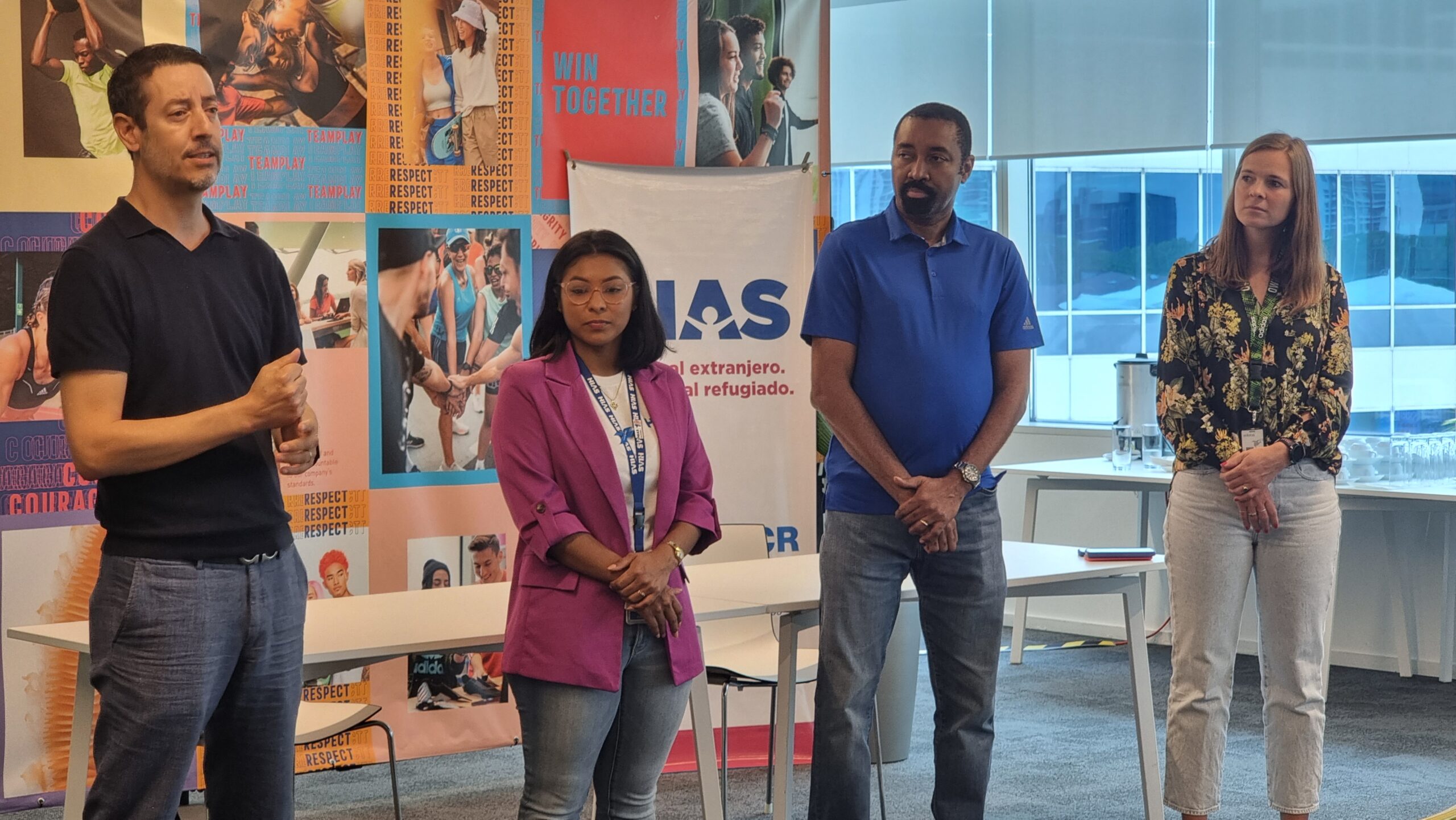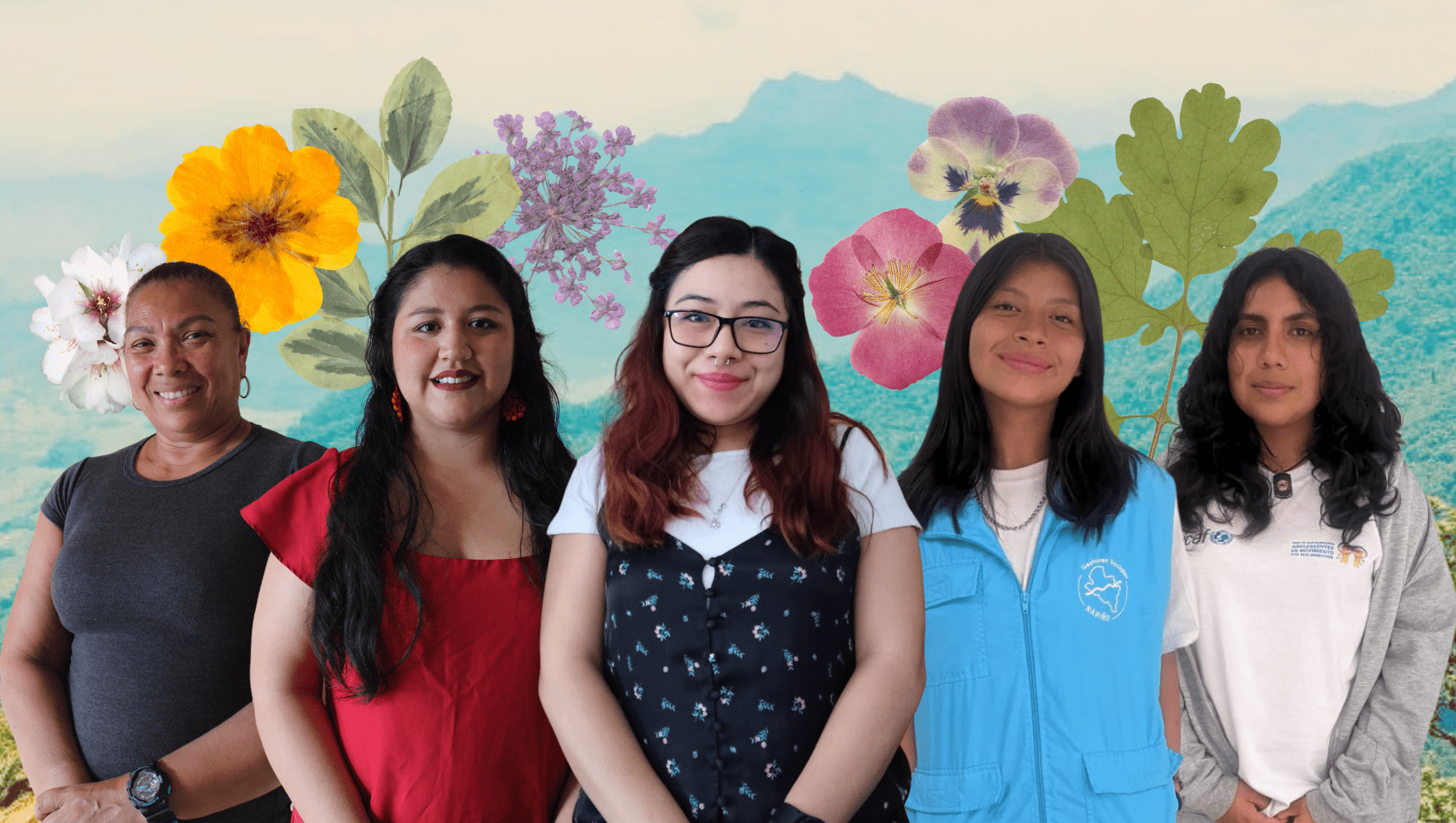Refugee Children Have a Right to Education on the Move
Jan 24, 2024

Families, accompanied by children, reach the Migration Reception Center by boat after traversing the Darien Gap in Lajas Blancas, Darién province, Panama, August 1, 2023. (David Quijano/HIAS)
This story originally appeared on the Save the Children website as “Save the Children and HIAS Join Efforts to Provide Children With Access to Educational Services Along the Central American Migration Route.”
In the framework of International Education Day, Save the Children and HIAS, in partnership with the Regional Education Group for Latin America and the Caribbean (GRE-LAC), launched the second phase of the campaign Education Without Limits: I Learn Here or There, which aims to inform and raise awareness about the importance of the right to education and how to access educational services for refugee and migrant children and adolescents on the migration route through Central America.
Currently, 4.1 million migrant children and adolescents in Central America and Mexico need humanitarian assistance to survive, according to UNICEF.
Save the Children warns that refugee and migrant children and adolescents are at risk of not being able to continue their studies due to their mobility.
This is the case of more than 120,000 children and adolescents who have crossed the Darién Gap, a dense rainforest located between Panama and Colombia that has become one of the most dangerous irregular migration routes. In 2023, the number of people moving through this jungle increased by 225% compared to 2022, exceeding 500,000 people.
When crossing borders, refugee and migrant children and adolescents face challenges in continuing their studies due to the lack of articulated services and information between one country and another.
Interrupting their learning generates consequences in their development, including the loss of acquired knowledge, learning gaps, and educational backwardness relative to their age — as well as their integration into the countries that receive them.
Girls represent around 20% of the flow of female human mobility in the region, facing additional barriers to access education due to causes related to structural gender differences, according to Plan International’s report Adolescent Women in Crisis: Life in Contexts of Mobility in the Central America and Mexico Region.
Related News
In the Darién, Refugees Receive Help All Along the Way

“It is our priority to address the urgent needs of migrant children and adolescents and facilitate their access to education during their journey through Central America and Mexico,” said Victoria Ward, Save the Children’s regional director for Latin America and the Caribbean. “Save the Children implements comprehensive programs to address the root causes and impacts of migration, advocating for the rights of migrant children who are exposed to multiple risks as they depart on their journey and put their education on hold.”
“One out of every four people who crossed the Darién in 2023 were children or adolescents,” said Cristina Garcia, HIAS’ senior vice president for Latin America and the Caribbean. “In their condition of displacement, they constantly face situations that put their protection and access to basic rights such as education and health at risk. HIAS field staff provides care throughout the displacement cycle, with special emphasis on borders, transit routes, and host communities, offering services that close the gaps that affect the welfare and development of children and their families.”
The Education Without Limits: I Learn Here or There campaign is an initiative of the Regional Education Group for Latin America and the Caribbean (GRE-LAC) within the framework of the Regional component of the Multi-Year Resilience Program (MYRP). It includes funding from Education Cannot Wait (ECW) and the Government of Canada as well as from the leadership of Save the Children. The campaign’s goal is to make the educational crisis experienced by children and adolescents in a situation of mobility visible, in addition to promoting their access to and permanence in educational services. It also aims to publicize the positive impact on a host community of children and adolescents in a situation of human mobility having access to this right.
In this second phase of the Campaign Education Without Limits: I Learn Here or There, Save the Children and HIAS, with the financial support from the European Union, join efforts under the actions already advanced by GRE-LAC, through the Educational Route initiative. This initiative seeks to strengthen cross-border humanitarian coordination with national partner organizations to carry out advocacy and awareness actions, contributing to meeting the educational needs of children, adolescents, and families in their journey through Central America.
Educational Route is implemented in El Salvador, Guatemala, and Honduras, and in partnership with HIAS in Costa Rica and Panama.






